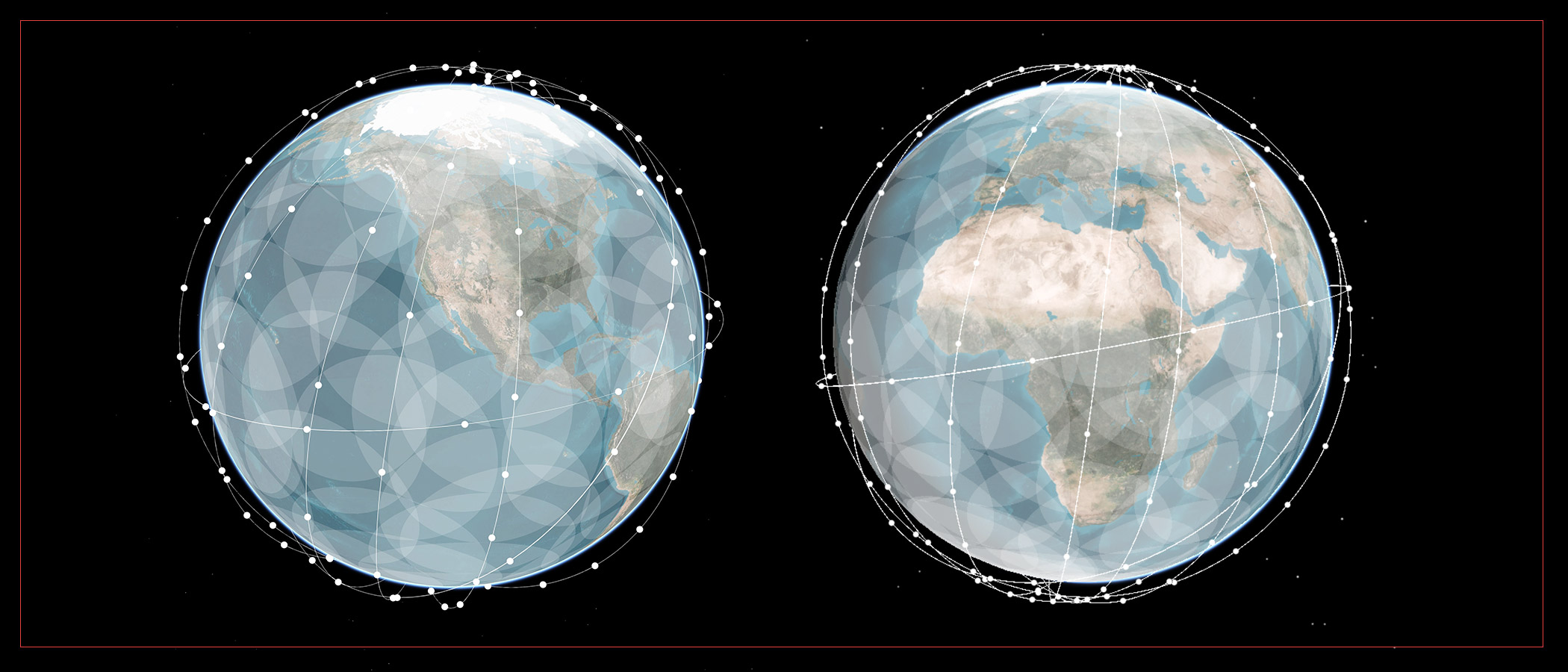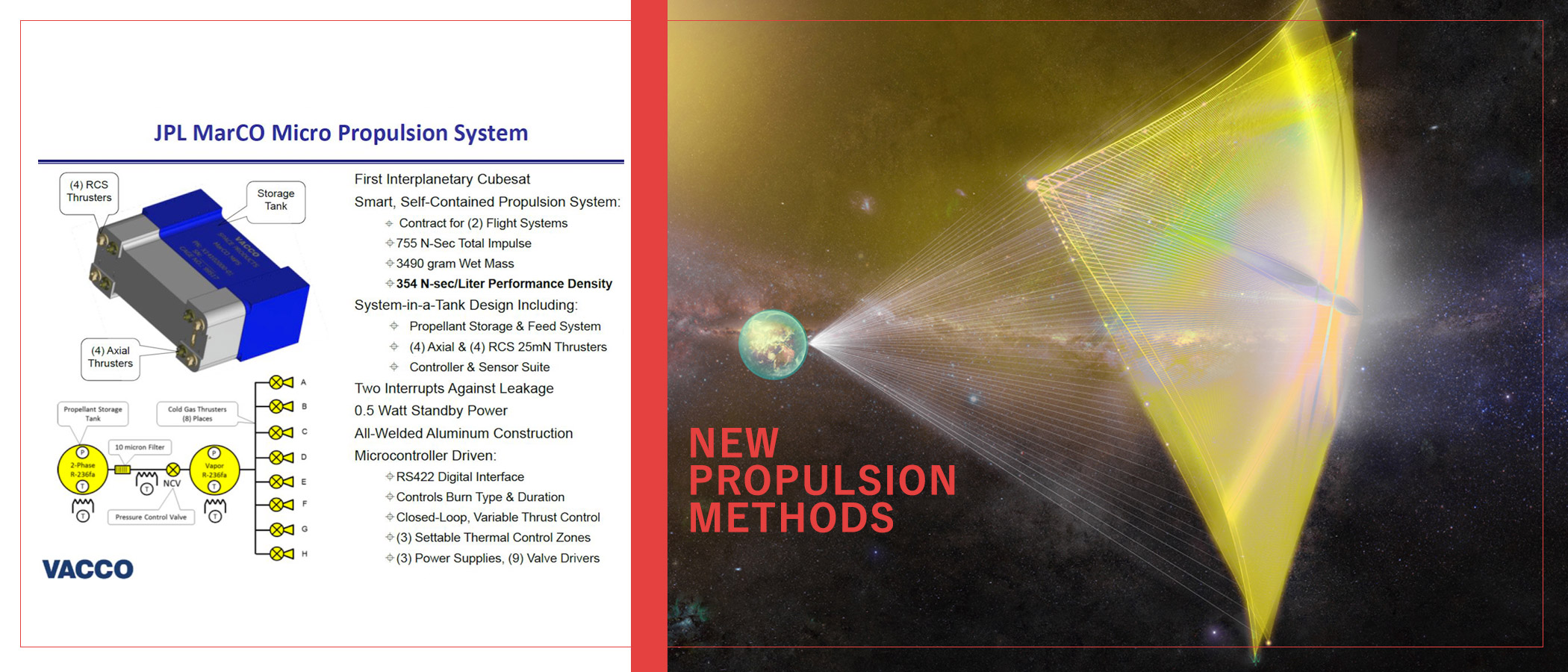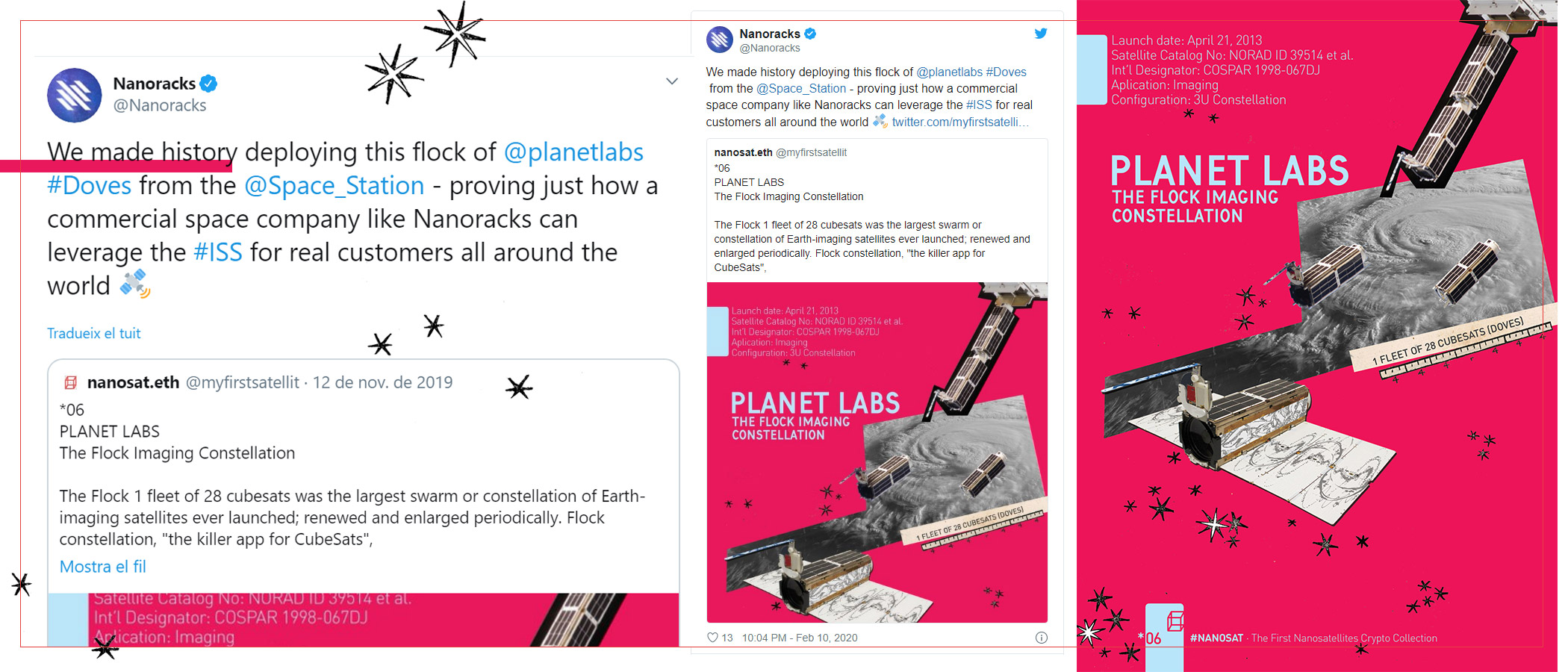
Constellations of Nanosatellites
February 26, 2020 · Nanosat Team
The unique combination of size, functionalities and low-cost make of the nanosatellites a must. At the beginning was tested and demostrated their feasibility using consumer electronics components. Inmediately was clear the potential paradigm shift that nanosatellites means. Now is not only possible but very affordable to design the missions in outer space using multiple spacecrafts.
With a swarm of nanosatellites, the sensing, the data collection and the scope of all type of operations are not limited to a single point but can cover simultaneously big wide areas. This way, for exemple, a constellation of around two hundred cubesats make of them the “Eye on the Sky,” imaging all Earth, all time. This Flock Imaging Constellation of Planet Labs is a milestone in Earth observation made possible by this new feature of nanosatellites. “Our mission is to image the entire Earth every day and make global change visible, accessible, and actionable. Planet provides geospatial insights at the speed of change, equipping users with the data necessary to make informed, timely decisions. We offer a diverse selection of imagery and analytic solutions, all made available online through our platform and web-based tools. From agriculture and emergency response to natural resource protection and security, we believe that timely, global imagery and foundational analytics will empower informed, deliberate, and meaningful stewardship of our planet.”
There are other constellations in use, such as that of Lemurs (Low Earth Multi-Use Receiver) by Spire what is the largest general purpose cubesat constellation, with 88 units in orbit right now devoted to weather forecast and to track ship and airplanes traffic. Spire Global presents itself as “a data and analytics company that collects data from space to solve problems on Earth. Owning and operating one of the largest satellite constellations in the world, Spire Global identifies, tracks, and predicts the movement of the world's resources and weather systems so that businesses and governments can make smart decisions.” There are also others constellations of nanosatellites under construction, such that of Swarm Technologies that will try to “enable global connectivity with the world's lowest-cost satellite network,” thru a space-based Internet of Things (IoT) network. It received past October its commercial license from the FCC (Federal Communications Commission) for its commercial spectrum and launch of a 150 satellite constellation. Their “world’s smallest communications satellites,” the SpaceBEEs, can be used to support the precision agriculture, maritime, ground transportation, and text messaging services. They explain that "Swarm is turning the satellite industry on its head. Others continue to focus on high bandwidth networks that are very expensive, power-hungry, difficult to integrate, and will take years and billions of dollars to bring online. Swarm has developed something entirely new: a low-bandwidth, latency-tolerant network that is extremely inexpensive, low-power and very easy to integrate for things that need to be connected anywhere in the world—and Swarm is doing it in a tenth the time of a traditional satellite network build." Beyond the Earth orbit, an amazing project is the Great Lunar Expedition for Everyone (GLEE) that will send 500 spacecraft to the moon by 2023. These LunaSats, each of which will weigh 5 gram and cost less than $200, will be built by students from all 193 countries of the United Nations.

Until very recently the smallest of spacecrafts don’t have their own propulsion but the panorama is changing very fast. The size of the majority of nanosatellites is like a loaf or even a slice of bread, the bigest can be briefcase-sized and the smaller can be the size of a post stamp. Use of the chemical propulsion, standard in previous satellites, is a danger on so tiny spacecrafts. But propulsion is a need to expand functionality of the spacecraft – decommissioning maneuvers needed to minimize space debris – and to convert them in a truly fleet – with formation flying, orbital maintenance maneuvers… –. The challenge has been overcome with innovative propulsion alternatives. One of the most spectacular and simple has been the succesful use of compressed CO2 cold gas thruster (the same stuff found in fire extinguishers) in the first interplanetary mission for CubeSats: the MarCOs' pathfinder journey to Mars, a milestone in space exploration that opened a new era of deep-space nanosatellites. This engines pushed the spacecrafts beyond Mars, hundreds of millions of kilometers from Earth, and make two trajectory correction. In the second correction maneuver was detected a leaky fuel valve in MarCO-A (aka WALL-E, in reference to the character in the animated film) but engineers learned to manage the leak. By the way, MarCO – which stands for Mars Cube One – is evocative of the legendary explorer Marco Polo. Another amazing demostration of the propulsion in nanosatellites is under development with LightSail, the citizen-funded project from The Planetary Society, is the first controlled solar-sailing flight in Earth orbit. There are currently many initiatives to test new propulsion methods for nanosatellites, from the use of water thrusters and cold gas thrusters to a wide variety of solutions for electric propulsion – electrospray thruster, vacuum arc thruster, plasma thrusters, Nano Field Effect Electric Propulsion (NanoFEEP) thrusters, Hall effect plasma thrusters... –. Not to mention the bold proposal of the StarChip propulsion to the stars with lasers beaming the sails of nanocrafts! “In the last decade and a half, rapid technological advances have opened up the possibility of light-powered space travel at a significant fraction of light speed. This involves a ground-based light beamer pushing ultra-light nanocrafts – miniature space probes attached to lightsails – to speeds of up to 100 million miles an hour. Such a system would allow a flyby mission to reach Alpha Centauri in just over 20 years from launch, beaming home images of its recently-discovered planet Proxima b, and any other planets that may lie in the system, as well as collecting other scientific data such as analysis of magnetic fields.”

The building blocks of new disruption in space are being tested: In near future, multiple nanosatellites -swarm, flock, fleet or constellation-, with precision formation flying techniques, and connected in a mesh network, could perform equivalent tasks to biggest satellites. Two key building blocks are precision formation flying techniques and the connection of nanosatellites in a mesh network and the two are being just tested currently in the missions Proba-3 and Pony Express 1. Proba-3 is ESA’s – and the world’s – first precision formation flying mission. Beside its scientific interest, the experiment will be a perfect instrument to measure the achievement of the precise positioning of two spacecraft. The double satellites making up Proba-3 will fly in formation to cast an artificial solar eclipse, opening up the clearest view yet of the Sun’s faint atmosphere. “To achieve this the satellite pair must achieve an unprecedented precision of flight control,” explains Proba-3 system manager Damien Galano. “They must align along an average distance of 144 m apart, maintained to an accuracy of a few millimetres. By achieving such precision formation flying techniques, in future multiple small satellites could perform equivalent tasks to individual giant spacecraft.” Technologies being flight-tested by Pony Express 1, a hosted payload on Tyvak-0129, include: adaptive mesh communications between satellites, software-defined radio, and 3D-printed wideband antenna.
Stay tuned to great achievements in space exploration that will be done by nanosatellites!
NB. The term ‘nanosatellites’ has caught on recently to refer to all type of itty tiny satellites. Here I use the term nanosatellite to refer to the actual nanosatellites (or nanosats, with a mass of between 1 and 20 kilos) but also to the picosatellites (or picosat, between 0.1 and 1 kg) and to the femtosatellites (or femtosat, of a mass less than 100 grams). Although the word does not conform to the technical classification of small satellites, it is widely used in this way.
.
.
.
This post was originally published on cent:
https://beta.cent.co/+yeln4z
COMMENTS
Feb 26, 2020 by @ozimaster
It would be great to think about some kind of system eliminating faulty, broken down or not operating anymore nanosatellites from the space so we don't leave so much litter as we do on Earth. This should be thinked now before we realise how much this issue will be impacting other space projects in future. I am worried if nanosatellites will get more and more popular, less expensive some of them will just be abandoned. I very much like nanosatellite idea and understand how good it is for us.
Feb 26, 2020 by @nanosat
That's a good point... that deserves another post! There are even those who have referred to cubesats as the 'debris sats'. The fact is that nanosatellites also follows the international guidelines for satellites to decommissioning within 25 years post mission. Given that, in principle, they had no propulsion of their own, that means they should orbit below 600 km. The reality is that the vast majority of nanosatellites orbit to more lower altitudes so deorbit naturally, as the result of atmospheric drag, in just a matter of months. Anycase the things are evolving very fast. More and more nanosatellites have their own propulsion, wich can be used to the spacecraft' disposal at end of their mission. In other cases have been tested and implemented passive means for deorbit like sails or electromagnetic tethers. There are succesful projects that are testing different methods for removal of space debris from cubesats. It is even being studied to create a standard on the end of life and the decommissioning for nanosatellites
